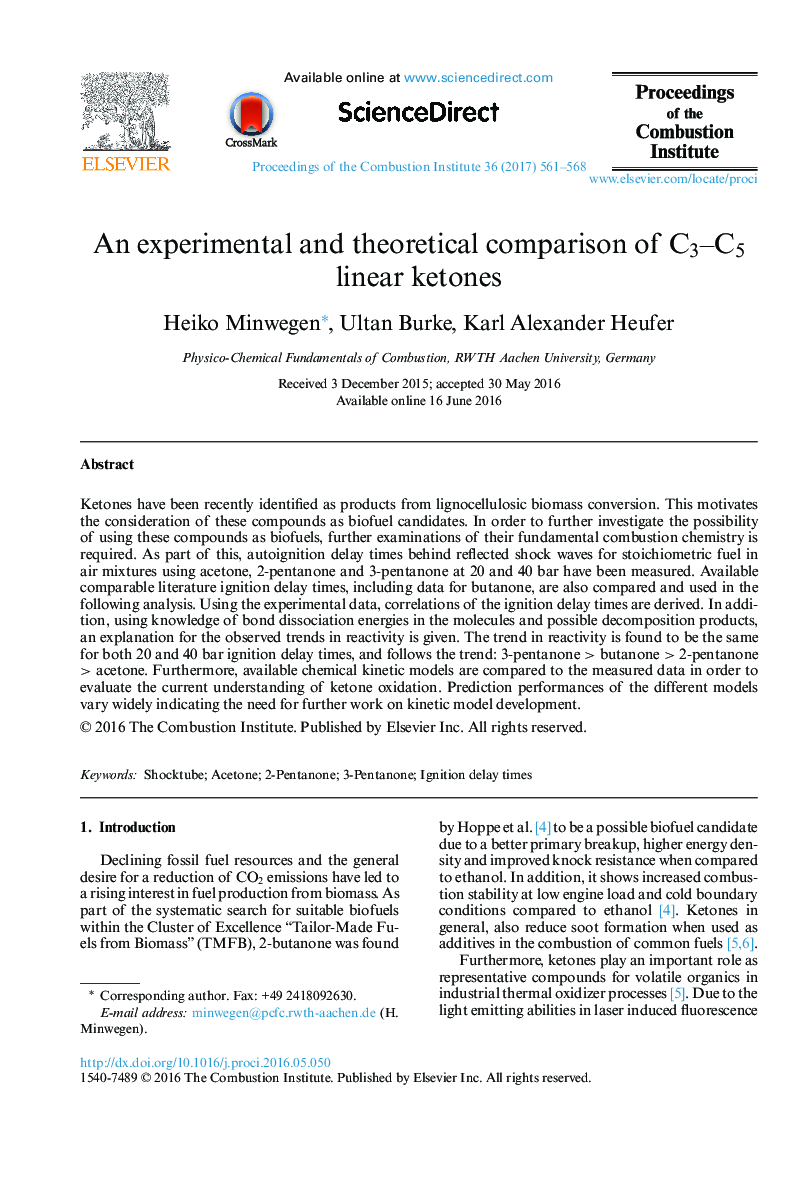| کد مقاله | کد نشریه | سال انتشار | مقاله انگلیسی | نسخه تمام متن |
|---|---|---|---|---|
| 6478020 | 1427917 | 2017 | 8 صفحه PDF | دانلود رایگان |

Ketones have been recently identified as products from lignocellulosic biomass conversion. This motivates the consideration of these compounds as biofuel candidates. In order to further investigate the possibility of using these compounds as biofuels, further examinations of their fundamental combustion chemistry is required. As part of this, autoignition delay times behind reflected shock waves for stoichiometric fuel in air mixtures using acetone, 2-pentanone and 3-pentanone at 20 and 40Â bar have been measured. Available comparable literature ignition delay times, including data for butanone, are also compared and used in the following analysis. Using the experimental data, correlations of the ignition delay times are derived. In addition, using knowledge of bond dissociation energies in the molecules and possible decomposition products, an explanation for the observed trends in reactivity is given. The trend in reactivity is found to be the same for both 20 and 40Â bar ignition delay times, and follows the trend: 3-pentanone > butanone > 2-pentanone > acetone. Furthermore, available chemical kinetic models are compared to the measured data in order to evaluate the current understanding of ketone oxidation. Prediction performances of the different models vary widely indicating the need for further work on kinetic model development.
Journal: Proceedings of the Combustion Institute - Volume 36, Issue 1, 2017, Pages 561-568